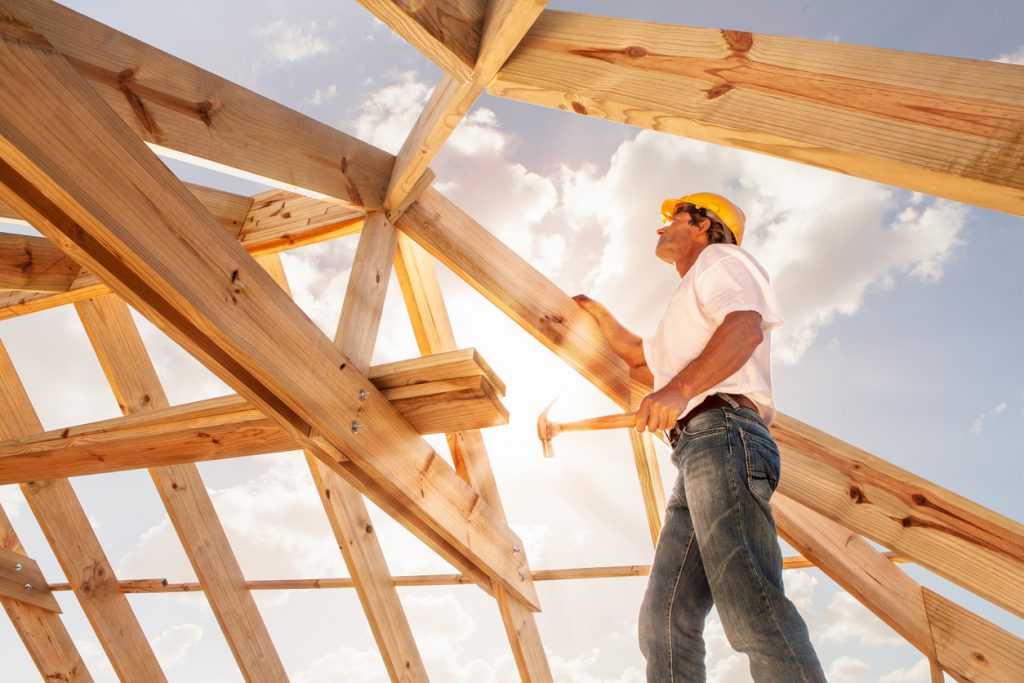
The APA Engineered Wood Association provides comprehensive guidelines for the storage of OSB wood panels on site. Correct on-site storage will allow OSB wood panels to acclimatize to conditions on the building site and prevent a plethora of framing problems down the line.
Moisture Content
All wood will expand or contract until its moisture content matches that of its environment. While this may result in buckling or warping, OSB panels are less susceptible to this because of the way in which they are manufactured. From the APA U425: “Wood structural panels have good dimensional stability because the tendency of individual veneers or strands to swell or shrink is greatly restricted by the adjacent veneers or strands in the panel.”
Despite their added stability, OSB panels should be protected from the elements and from potential damage.
Correct Storage of Materials
It’s important to store panels correctly on-site to allow them to acclimate and to prevent the absorption of excess moisture. The APA outlines several guidelines on the correct storage of panels to minimize the conditions that can lead to buckling and ridging; after all you’re protecting your investment.
Wherever possible, panels should be stored under a roof to reduce exposure to the elements. Panels should be laid flat to prevent damage to the edges. Place pieces of lumber evenly on the top of your stack of panels to reduce warping due to moisture.
If panels must be stored outdoors, here are some guidelines for proper storage:
- Place three 4x4s on the ground as block supports.
- Block supports should be aligned to ensure an even distribution of weight.
- Lay a plastic sheet or tarp down before stacking the panels to prevent ground moisture absorption.
- Lay the panels flat on the block supports.
- Place a 2×4 on top of the panels and cover the panels and the 2x4s with plastic sheeting or waterproof tarps.
- Secure the edges of the cover a little way from the panel sides to allow air to circulate around the panels.
- Stack panels in the order in which they will be used to minimize unnecessary lifting or damage to panel edges.
If OSB panels must stay exposed to the elements, cut steel bands to allow for even expansion when they get wet to prevent edge damage. Always allow your OSB panels to dry completely before installation.

